Art has often been a mirror for humanity’s collective soul, reflecting its aspirations and struggles. However, abstract art shatters that mirror, replacing clear reflections with enigmatic shapes and colors that demand introspection. For instance, Kandinsky’s revolutionary use of abstract forms and vibrant colors redefined how we connect with spirituality through art, while Martin’s grids stripped away distraction, leaving room for quiet contemplation. Rothko’s expansive color fields, on the other hand, create immersive spaces that invite viewers to confront their raw emotions. By challenging traditional representation, abstract art compels us to engage with the deeper, often unseen layers of existence. The philosophies of abstract artists like Wassily Kandinsky, Agnes Martin, and Mark Rothko open portals to the unseen, revealing how art can shift our perceptions, transform our lives, and invite us into profound spiritual awakenings. Let’s delve into their worlds and see what lessons their philosophies hold for us today.
Wassily Kandinsky: The Spiritual Symphony of Life
Kandinsky, often dubbed the “father of abstract art,” viewed art as a spiritual act. In his seminal book Concerning the Spiritual in Art, he argued that colors and forms held inherent emotional and spiritual vibrations. For Kandinsky, creating art wasn’t just an intellectual exercise but a spiritual calling—a way to align the material world with the divine.
Kandinsky’s philosophy teaches us to trust intuition and embrace the immaterial, urging both artists and viewers to move beyond tangible reality and connect with the spiritual essence of existence. For artists, this might mean allowing instinct to guide every brushstroke or color choice, while for viewers, it could involve letting go of the need for literal interpretations and instead tuning into the emotional resonance of the work. He believed in the idea of “inner necessity,” where each stroke and color must resonate with the artist’s inner truth. This idea is profoundly liberating in a world that often prizes logic over feeling. Engaging with his work—swirls of color and geometric forms that vibrate with energy—can awaken our sensitivity to the invisible currents of life.
What we learn: Kandinsky’s work reminds us to honor the unseen forces within us and around us. Abstract art becomes a meditation, a way of listening to the soul’s whisper amidst life’s noise.
Agnes Martin: The Serenity of Simplicity
Where Kandinsky’s art thrums with cosmic energy, Agnes Martin’s work whispers in serene, minimal tones. Known for her precise grids and muted palettes, Martin’s art embodies a philosophy of stillness and transcendence. She viewed her work as an expression of absolute happiness, believing that beauty and truth exist in simplicity.
Martin’s personal life was marked by solitude and introspection. She lived without clutter, both physically and emotionally, in the deserts of New Mexico. Her work reflects this—it’s meditative and invites the viewer to pause and breathe. She described her grids as “innocence of mind,” a place of refuge from the chaos of the external world.
What we learn: Martin’s philosophy urges us to embrace the power of simplicity and stillness. In a world of excess and overstimulation, her art invites us to find contentment in restraint and clarity.
Mark Rothko: The Sacred Depths of Emotion
Rothko’s towering color fields demand attention and introspection, enveloping the viewer in vast expanses of rich, layered hues that seem to pulse with life. These works create an almost overwhelming sense of presence, drawing one into their depths and evoking a visceral emotional response. His philosophy was rooted in the human condition—the joys, sorrows, and mysteries of existence. He believed that art should evoke raw, primal emotions, creating a direct dialogue between the work and the viewer.
“I’m not interested in relationships of color or form,” Rothko famously said. “I’m interested only in expressing basic human emotions—tragedy, ecstasy, doom.” His paintings are not just visual but experiential, offering an almost sacred space for viewers to confront their own emotions. Standing before a Rothko is like gazing into a deep well of your own psyche.
What we learn: Rothko’s philosophy encourages us to embrace vulnerability and confront the depths of our emotions. Abstract art becomes a mirror—a tool for self-discovery and emotional release.
The Transformative Power of Abstract Art
Interacting with abstract art is an exercise in letting go. It asks us to surrender the need for literal meaning and instead open ourselves to feeling and intuition. This mirrors the life philosophies of Kandinsky, Martin, and Rothko, who all teach us to look beyond surface appearances—to connect with the spiritual, the serene, and the emotional.
In a broader sense, abstract art can shift our relationship with uncertainty. Just as we must grapple with ambiguity on the canvas, so too must we navigate the ambiguity of life. Kandinsky’s swirling forms remind us to trust our inner impulses, Martin’s measured grids teach us to find peace in simplicity, and Rothko’s emotive color fields urge us to confront our feelings directly. These techniques illustrate how abstraction mirrors the uncertainties of existence, guiding us toward deeper understanding and self-discovery. Abstract art reminds us that meaning is not always immediate or obvious, but it’s there, waiting to be uncovered. For instance, a viewer encountering one of Rothko’s color fields might initially feel overwhelmed by its scale and intensity, only to find themselves drawn into its depths, uncovering emotions or memories they hadn’t expected. Similarly, engaging with a Kandinsky piece might inspire a sense of spiritual awakening, as the interplay of colors and forms stirs something deeply intuitive within.
A Challenge for the Viewer
As Kandinsky’s colors vibrate, as Martin’s grids calm, and as Rothko’s fields engulf, ask yourself: What is your life’s abstract masterpiece? How do you embrace uncertainty, simplicity, and emotion in your daily existence? Perhaps the greatest lesson from these artists is that life itself is abstract—a canvas where meaning emerges only when we dare to look beyond the surface, just as Kandinsky’s spiritual compositions teach us to trust the immaterial, Martin’s serene grids guide us toward simplicity, and Rothko’s emotive fields challenge us to confront our innermost feelings.

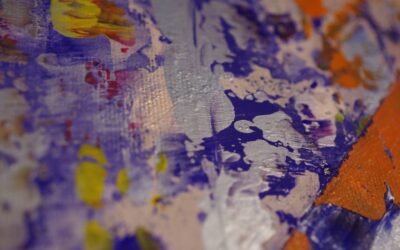
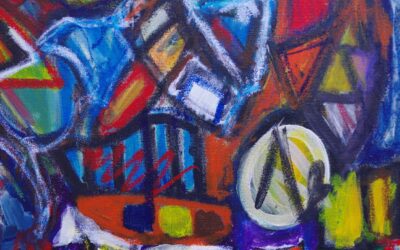
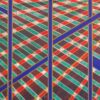
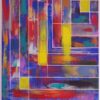
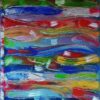
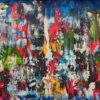
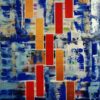
0 Comments